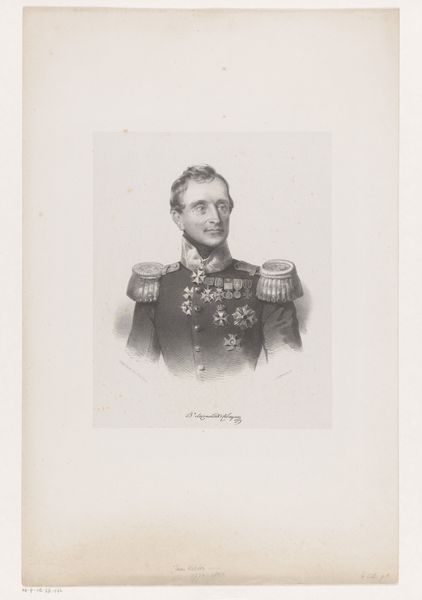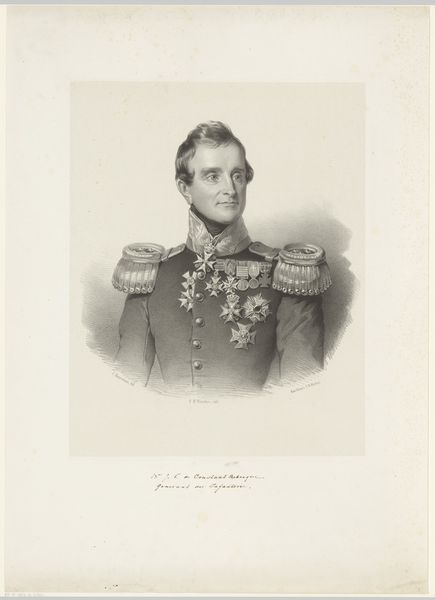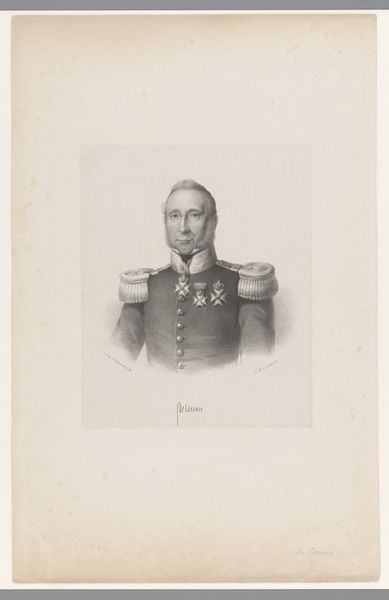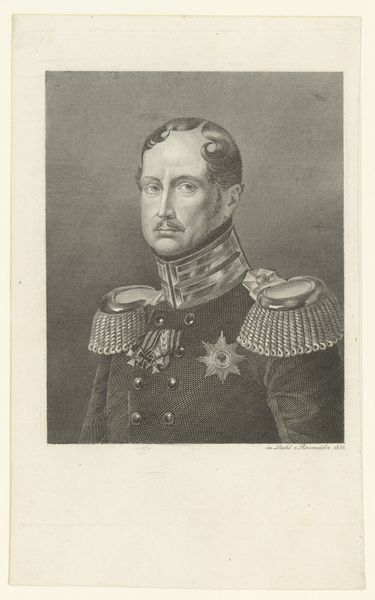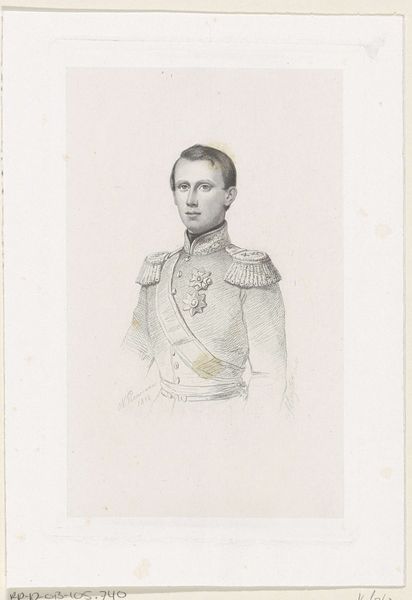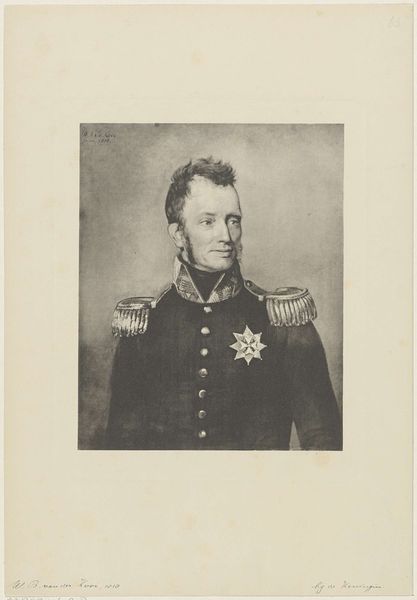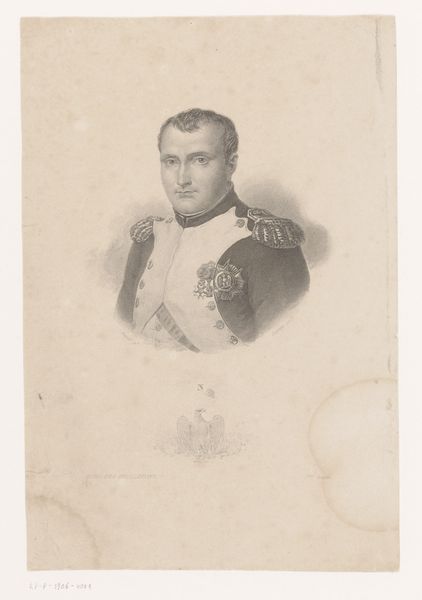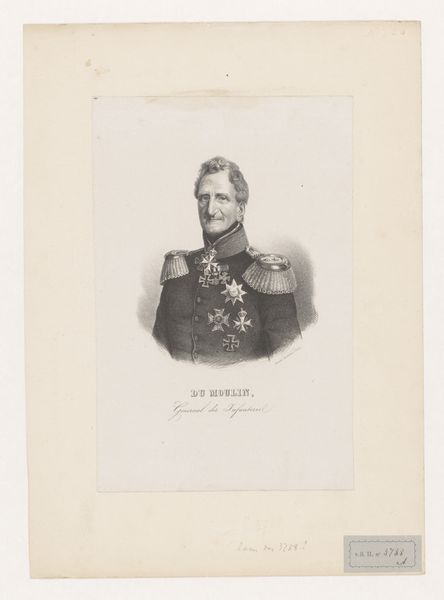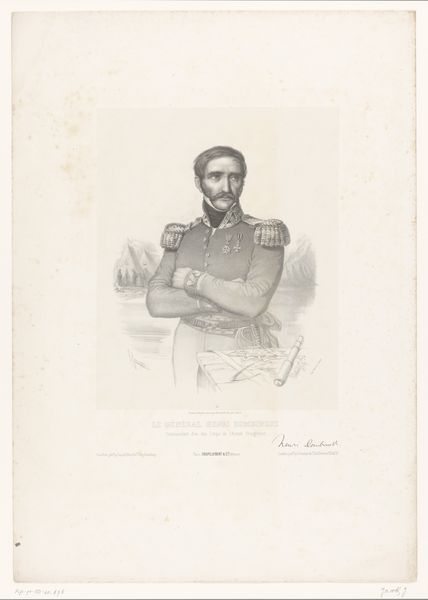
print, engraving
# print
#
old engraving style
#
romanticism
#
history-painting
#
engraving
Dimensions: height 586 mm, width 452 mm
Copyright: Rijks Museum: Open Domain
Editor: Here we have Emil Krafft's "Portret van Job von Witzleben," made between 1821 and 1837. It’s an engraving of a stern-looking military figure. All those medals! I find it interesting how seriously people presented themselves back then. What historical weight do you see in this portrait? Curator: More than meets the eye! Beyond the stiff posture typical of the era, consider what a portrait like this *meant* then. It projects power, yes, but also aims to establish legitimacy within a very specific social hierarchy. How do the symbols of status function here, especially when considered alongside the growing societal unrest of the time? What message was being sent? Editor: So, the medals and uniform aren’t just decorative. They're part of a visual language? A sort of…propaganda, maybe? Curator: Exactly! This portrait is a carefully constructed statement. Think about the burgeoning Romantic movement alongside increasing political radicalism in the early 19th century. What role does portraying someone in such a classical, almost stoic way serve in the face of that upheaval? Is it upholding tradition or masking anxieties? Editor: It sounds like even a seemingly straightforward portrait can be seen as a site of cultural negotiation. I’ll never look at old portraits the same way! Curator: That’s the power of contextualizing art! By interrogating its social and historical purpose, we uncover the complexities within even the most formal representations of power. Editor: Absolutely, and this deep dive helps us question, even challenge, the visual languages that surround us every day.
Comments
No comments
Be the first to comment and join the conversation on the ultimate creative platform.
